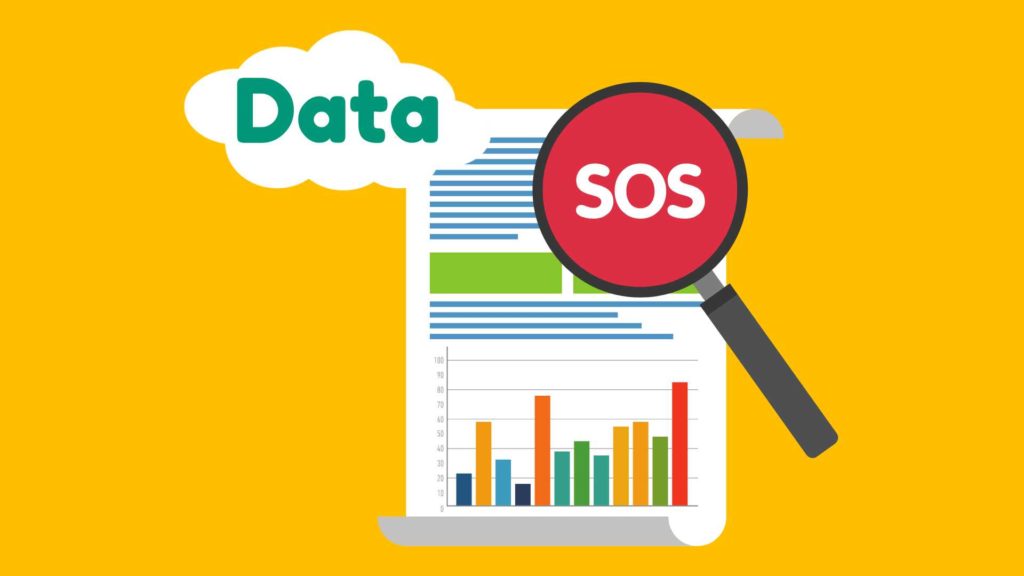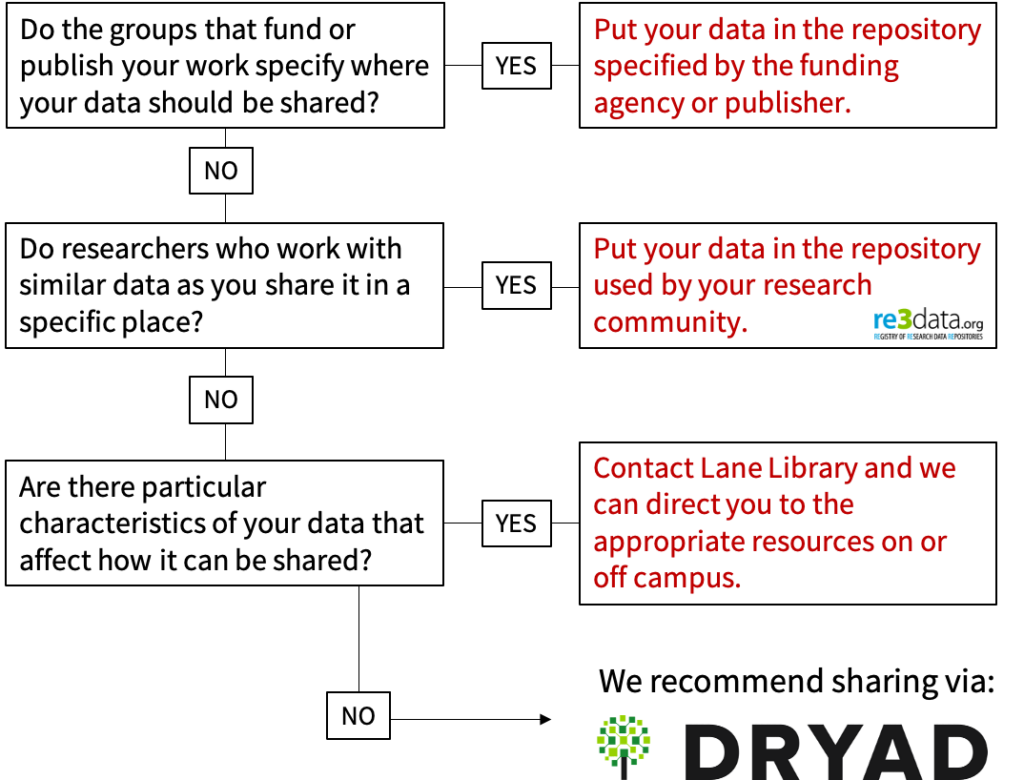
Data SOS: Making Data Publicly Available
Welcome to Data SOS, a regular column from Lane Medical Library where we answer questions about data management and data sharing submitted by the Stanford Medicine community. If you have a question that you’d like to see addressed in a future column, please leave a comment or use this form.
Dear Data SOS,
I need to make my data publicly available. Where do I put my data to make this happen?
-Data in Need of Home
Dear Data in Need of Home,
Great question. There are several factors to consider when searching for a place to house your data. You’ll want to make sure your datasets are findable by other researchers in your field. Answer the following questions (also shown in the flowchart) to find a suitable repository to publicly share your data.
Questions to Ask Yourself
- Did the groups that fund or publish your work specify where your data should be shared?
- If so, use the specified repository.
- Does your field of research share data in a specific place?
- Browse re3data.org to locate a subject-specific repository.
- Are there characteristics of your data that affect how it can be shared?
- If so, use our DMP service to ask for help finding appropriate resources. If not, we recommend considering Dryad. Read on for more information.
- If so, use our DMP service to ask for help finding appropriate resources. If not, we recommend considering Dryad. Read on for more information.

Using Dryad
The Dryad Digital Repository is a curated resource that makes research data discoverable, reusable, and citable. Dryad is free to use for all Stanford-affiliated researchers. The first time you log in using your ORCID iD, you will be asked if you are affiliated with a member institution. After selecting Stanford from the drop-down menu, you will be asked to sign in using your Stanford credentials.
Key features of Dryad:
- Flexible about file format, meaning you can upload your datasets in whatever form they take.
- Automatically assigns digital object identifiers, meaning researchers will be able to easily cite your datasets.
- Curated by experts, meaning that somebody at Dryad will check to ensure your files can be opened, you haven’t inadvertently shared sensitive data, and that you have included sufficient descriptive information for another researcher to find and use your datasets.
- Contents are preserved for the long term, meaning your datasets will be accessible indefinitely.
Now that you know how to approach your problem, hopefully, you have a plan for getting your data settled into their new, publicly-available home! If you need further assistance, please reach out to your liaison librarian.